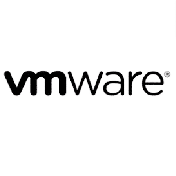Inhalt des Trainings
The HPE Performance Cluster Manager (HPCM) Foundations course provides knowledge and practice in cluster operation areas such as navigating the HPCM graphical user interface (GUI), monitoring cluster components, operating system boot modes and root filesystem modes, cluster power management, running commands on multiple servers, connecting to server consoles, and backing up the cluster configuration.
After you successfully complete this course, expect to be able to:
- Describe cluster components
- Navigate HPCM GUI
- Use operating system boot modes and root file system modes
- Manage power with graphical and command line options
- Gather information from groups of servers
- Send instructions to groups of servers
- Compare differences between servers
- Connect server consoles with graphical and command line options
- Backup cluster and management switch configuration
- Backup the system admin node with your house solution
Zielgruppen
Attend this class if you operate and monitor cluster managed with the HPE Performance Cluster Manager (HPCM)
Vorkenntnisse
Linux Fundamentals (GL120) U8583S or equivalent Linux or VMware experience
Detail-Inhalte
Cluster Components
- Describe HPCM
- Describe clusters
- Describe clusters (flat) and distributed (hierarchical) clusters
- Define management, data and rack networks
- List cluster components
– Admin node
– Compute nodes
– Rack leader nodes
– ICE compute nodes
– Chassis management controllers (CMCs)
– Management interfaces (iLO, LO100i, BMC)
– Management of Ethernet switches
– Fabric switch switches and blades
– Smart PDUs
– Storage
HPCM GUI
- Locate system groups
- Locate network groups
- Review image groups
- Use custom groups
- Manage nodes
- SSH to nodes
- Shutdown node
- Power off node
- Reboot node
- Illuminate the locate beacon to identify the chassis
- Run tasks on multiple systems
- Monitor the cluster
- Run commands to apply load on nodes
- View left chart to display CPU load
- View right chart to display memory usage
- Focus on single node
- Focus on group of nodes • Switch to bar graph or table view
- Turn metrics off and on • Use Ganglia to monitor cluster
- Use Nagios to monitor cluster
- Manage cluster power
- Monitor node power consumption
- Monitor job power consumption
- Monitor system power consumption
Operating System Boot Modes and Root Filesystem Modes
- Describe disk mode • Describe PXE mode
- Describe disk, nfs and tmpfs root file system mode
Running Commands to Gather Information on the Cluster
- Describe pdsh
- Use pdsh commands to interrogate the cluster
- Describe output, interleaved stdout, stderr
- Review predefined pdsh node groups
- Add a pdsh node group
- Run a command with the new pdsh node group
- Run a command using the exclude node group format
- Format output from pdsh commands with dshbak –c
- Copy a file to all compute nodes, to all leader nodes, to all ice-compute nodes,
- Retrieve a file from all compute nodes, from all leader nodes, from all ice-compute nodes
- Work with HPCM connector to job scheduler
- Search central log repository
CLI Power commands
- Use the cm power command to – Check the power status of the cluster
– Power on the cluster
– Power off the cluster
– Power on or off individual and groups of nodes
– Turn on and off node identify LEDs
CLI Console Feature
- Connect to the node console by using the console command
- Disconnect from the console session
- Obtain online help in the console session
- Steal write privileges on the console session
- Playback the last 60 lines of cached console output
- Troubleshoot failing console command
Cluster Configuration
- Save a cluster configuration file
- Backup the cluster database
- Backup and query management switch configurations
- Backup the system admin node with your house solution
Microsoft
Microsoft Office
ITIL
Red Hat
Cisco
 VMware
VMwareCitrix
Unix Linux
Amazon AWS
 Oracle
OracleAutoCAD
IBM
Hewlett Packard Enterprise (HPE)
Google
Salesforce
AI – Artificial Intelligence
Automatisierung
Cloud Computing
Grafik
IT-Management
Development
Security
Netzwerk
Data Science
Soft Skills
Video Based Trainings
Nachhaltigkeit
